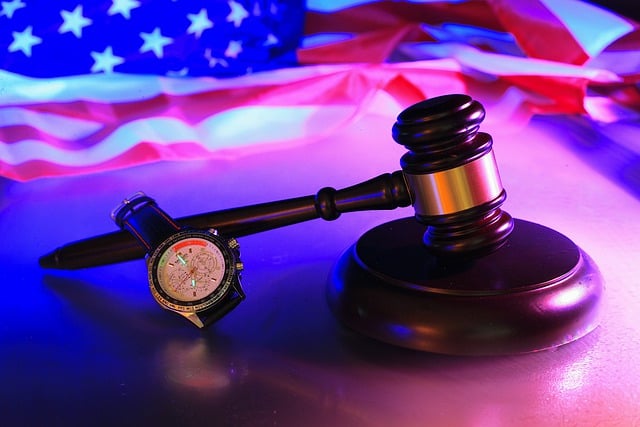Pedestrians' safety in urban areas is a key concern, especially around commercial drivers. Jurisdictions have implemented strict regulations and penalties for commercial driver DUI offenses due to their heightened impact on public safety, including slower reaction times and difficulty navigating tight spaces. Mitigating these penalties while prioritizing safety is crucial for commercial driver DUI defense strategies, which may involve arguing mitigating circumstances or leveraging legal loopholes specific to commercial drivers. Community engagement plays a vital role in advocating for safer streets and holding drivers accountable. For those facing DUI charges, understanding state laws and seeking specialized DUI Defense for Commercial Drivers representation is essential to protect licensure and future career prospects.
Understanding Pedestrians' Rights: A Comprehensive Overview

Pedestrians have rights, and ensuring their safety is paramount in any urban environment. Understanding these rights is crucial, especially when it comes to interactions with commercial drivers. In many jurisdictions, laws protect pedestrians from potential harm caused by vehicles, including those driven by professionals with a Commercial Driver’s License (CDL).
A key aspect of this protection is the regulation of driver behavior, such as strict adherence to speed limits and traffic signals, especially in areas with high pedestrian traffic. Additionally, commercial drivers are often held to higher standards when it comes to DUI (Driving Under the Influence) offenses due to the potential impact on public safety. This includes stringent penalties and increased liability insurance requirements to safeguard pedestrians and ensure that our streets remain safe for everyone.
The Impact of Commercial Driver DUI on Pedestrian Safety

The impact of commercial driver DUI on pedestrian safety cannot be overstated, especially in densely populated urban areas. When a commercial vehicle operator is under the influence, it poses a significant risk not only to other motorists but also to vulnerable pedestrians. These drivers often operate large and heavy vehicles, making their reaction times slower and their ability to navigate tight spaces more challenging. This increases the likelihood of accidents, particularly in busy intersections and pedestrian zones.
A DUI conviction for a commercial driver can have severe repercussions, including license suspension or revocation, hefty fines, and potential jail time. However, as part of a robust DUI defense strategy, commercial drivers and their legal representatives should explore options to mitigate these penalties while ensuring public safety remains paramount. This may involve arguing mitigating circumstances, presenting evidence of rehabilitation, or leveraging specialized legal loopholes related to commercial driver regulations, such as those governing DUI Defense for Commercial Drivers.
Legal Framework: Protecting Pedestrians from Impaired Drivers

In many jurisdictions, the legal framework surrounding pedestrian safety has been strengthened to deter impaired driving and protect those who walk our streets. When a driver operates under the influence (DUI), they pose a significant risk not only to other vehicles but also to pedestrians. This is especially concerning given that commercial drivers, who often transport large vehicles and valuable cargo, are subject to stricter regulations regarding substance use. A robust DUI defense for commercial drivers is crucial in ensuring these professionals remain safe and accountable on the road.
By implementing stricter laws and penalties, governments aim to deter potential impaired drivers from getting behind the wheel. These measures include enhanced license suspensions, fines, and mandatory safety courses. Additionally, many regions have established dedicated pedestrian zones and improved street design to make them more accessible and safer for those on foot. This multi-faceted approach not only protects pedestrians but also reinforces the seriousness with which society views impaired driving.
Designing Safe Streets: Strategies for Reducing Pedestrian-Vehicle Conflicts

Community Engagement: Empowering Pedestrians to Advocate for Change

Community engagement is a powerful tool in advocating for safer streets and protecting pedestrians’ rights. By empowering individuals within communities, especially those who frequently walk or are affected by traffic conditions, we can create a collective voice that demands change. Encouraging residents to participate in local meetings, join advocacy groups, and share their experiences can bring attention to critical issues like pedestrian safety.
This involvement may include raising awareness about potential hazards, such as poorly designed crossings, high vehicle speeds, or the presence of DUI (Drunk Driving Under Influence) defense lawyers targeting vulnerable pedestrians. With active community engagement, local authorities can better understand the needs and concerns of residents, leading to more informed decisions and ultimately, safer streets for everyone, including commercial drivers who must adhere to strict regulations to prevent DUI-related accidents.
Case Studies: Successful Implementations of Pedestrian-Friendly Policies

In light of the discussed topics, it’s clear that prioritizing pedestrians’ rights and safe streets is a multifaceted endeavor. From understanding legal frameworks like DUI defense for commercial drivers to implementing community engagement strategies, every effort contributes to fostering a more pedestrian-friendly environment. By adopting evidence-based designs and learning from successful case studies, we can continue to navigate towards a future where everyone shares the road safely and responsibly. Community advocacy and proactive policy changes are key to making our streets truly safe for all.






